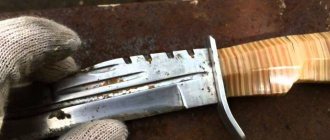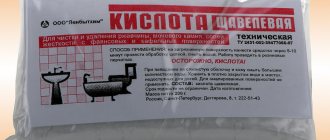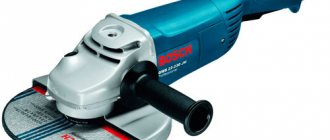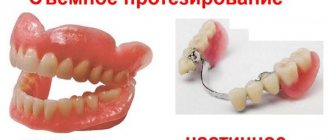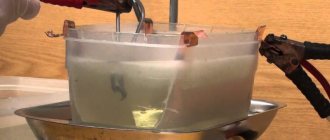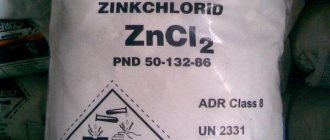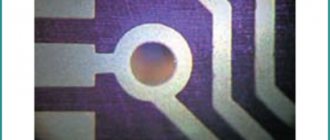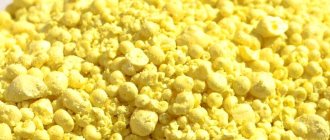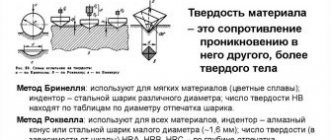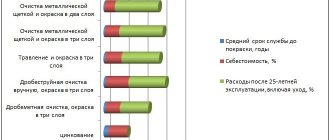Polishing is the final process of manufacturing a part, carried out using various methods in order to remove a minimum layer of metal to achieve a mirror-like shine on surfaces. These are interrelated physical, chemical, electrical influences, the choice of which depends on the type of material, the tool used and the characteristics of the external environment. The required quality is achieved by replacing abrasives and methods of exposure. Polishing time depends on the initial quality of the metal.
How to polish metal to a shine. Review and sale of funds on torgsp.ru
Metal products are present in every person's home. These can include anything from ordinary metal jewelry to car rims. However, over time, these products become dull and inconspicuous, and then you may be faced with a difficult question - how to polish the metal to a shine and return it to its original appearance .
Methods for polishing metal to a shine
To make a metal product the same as on the first day, you will have to try, since there are at least three ways to clean metal:
- Home;
- Machine;
- Classical.
Each of them will require some effort and diligence in order to achieve a good result, but it will meet your expectations.
Home method
To polish a metal product at home, there are many ways, each of which requires certain chemicals. Please note that some chemicals can be hazardous to health, so you must follow safety precautions and adhere to a certain algorithm.
The most common home cleaning method is to use sulfuric and nitric acids along with sawdust. Metal cleaning will proceed as follows:
- Dilute sulfuric acid in water in a ratio of 1:20. Depending on the size of the product, the exact dosage must be calculated so that the solution completely covers the entire product.
- Immerse the product in the solution for a while, after removing foreign objects from it.
- Rinse the item with water after removing it from the sulfuric acid solution and immersing it in sawdust.
- Leave the product in the sawdust until the moisture is completely dry, and then dip it in nitric acid.
- Rinse the product again with water and dip it in sawdust.
- Once the product is dry, rub the metal.
By following this algorithm, you can achieve good polishing results. The surface will be clean and mirror-like, as if new.
Another home polishing method is the use of GOI paste.
Before using this paste, it must be diluted in machine oil, since the structure of the paste is quite grainy and can damage surfaces.
Using felt, denim or flannel, rub the paste into the surface. By using a drill or other mechanical tool on which a block covered with fabric will be attached, you can achieve a faster effect.
Machine method
At its core, this method differs little from homemade using GOI paste. Any use of special tools, such as a drill or grinder, can be classified as a machine method.
Indeed, polishing will go much faster, but the likelihood of making a mistake and getting damaged also increases, so if you are not confident that you can handle this method, it is better not to use it.
Classic way
This method combines the speed of the mechanical method and the safety of the home method, without losing the effectiveness of polishing.
Using special polishing products will significantly speed up the process. Glanz-Rain metal polishing paste is considered the most effective means for polishing metal surfaces and products. It not only polishes the surfaces, but also completely cleans them of any contaminants and allows you to maintain the shine of the surface for a long time.
The method of applying polishing paste for metal is extremely simple:
- Shake the product container before use.
- Using a lint cloth, apply the paste to a slightly damp surface.
- Rub the product into the metal.
With these simple manipulations, the surface will be clean and shiny, just like the day you purchased the metal product.
Stay safe
Since all methods of polishing metal can harm the body in one way or another, safety precautions must be observed. Chemicals used in home remedies can damage the skin or respiratory tract if protective gloves or masks are not worn.
Mechanical tools such as an angle grinder or drill are also hazardous to your health. The sparks produced by the grinder can get into your eyes and damage them, so it is better not to use it without special safety glasses.
In addition, it is advisable to keep a first aid kit on hand in case of unforeseen situations.
The safest method of all those proposed is a special metal polishing agent, which does not harm the body if used correctly.
Using “tried” and “reliable” grandfather’s methods is, of course, effective, but compared to special metal polishing products, they are significantly inferior.
The best and most proven metal polishing paste will give the same effect as grandfather's method, while reducing the possibility of injury and saving you a lot of time.
Metal polishing
To give the best consumer qualities and attractive appearance to metal products, a finishing grinding procedure is carried out. Polishing the metal gives the product a decorative shine; also, performing a similar procedure allows you to prepare the surface for applying various materials.
Metal polishing
Types of jobs
Metal polishing can be carried out using the following methods:
- mechanical or abrasive polishing of products;
- chemical treatment using special substances, for example, paste;
- electrochemical method;
- electrolyte-plasma method.
Some types of finishing sanding are simple and do not require special materials or equipment. For example, the mechanical method can be used at home. However, it is practically impossible to achieve significant results when using them.
Disadvantages of traditional methods
Polishing metal using traditional methods, abrasive and chemical effects on the surface, has a certain number of limitations in application. These include:
- lack of possibility to automate the process. When carrying out work to obtain gloss, many enterprises introduce automatic processing technology, which can significantly reduce the time it takes to obtain a whole batch. Chemical, mechanical, electrochemical polishing have features that make it difficult to automate the technological process;
- the difficulty of obtaining a mirror surface when using the considered types of impact on metal concerns technological and electrical reasons. Economic reasons are primarily associated with the high cost of production robots and machines that operate on a numerical control system. Technological factors determine the impossibility of incorporating traditional methods of polishing metal products to obtain a mirror surface.
Polishing stainless steel with a felt polishing disc
Often the above problems lead to the fact that the work in question is done by hand using a special paste under mechanical influence.
This point determines a significant decrease in productivity, since processing on an automated line is impossible.
Due to the use of outdated methods, the production line often results in a conveyor failure, and this negatively affects the cost of obtaining the product and reduces the competitiveness of the enterprise.
Mechanical polishing method
For many years, a mechanical method of processing the surface of a metal product has been used. Special sets of abrasive wheels and belts, when combined with GOI polishing pastes, make it possible to obtain a material with a roughness index Ra = 0.05–0.12 microns.
The features of this password encryption method include:
- to automate the process, special machines are used that are equipped with fabric or felt circles;
- a certain amount of GOI paste is applied to the abrasive;
- the goyi paste in question is a special powder consisting of an active substance that has an activating effect on the surface of the product;
- A typical paste consists of approximately 60% abrasive and 40% binder. content of activating additive 2%.
Finish grinding can only be achieved using GOI paste. In this case, a soft wheel and GOI paste with a fine abrasive are used.
For such work, the material consumption is quite large: per 1 square meter of surface there are 0.3 felt wheels and an abrasive substance such as GOI, approximately 100 grams.
When processing complex surfaces, a belt type of material and the same GOI abrasive are used.
Special attention should be paid to GOI paste. It is a special substance that is based on chromium oxide. The substance from the GOI category is produced in the form of a green bar. Special GOI sets contain bars with different abrasive grain sizes.
Chemical polishing
During chemical polishing, the surface is exposed to a combination of a specific substance and galvanic fumes. This process determines the formation of a passivating oxide film, which leads to the leveling of surface microroughness.
The quality of polishing depends on the ratio of the rate of film formation and its dissolution in the liquid. The highest gloss can be achieved by forming a thin film. With chemical polishing of metal, it is possible to achieve a film of thinner thickness than with electrochemical polishing, which determines the possibility of achieving better shine, but large irregularities in the part cannot be leveled out.
Electrochemical polishing
Electromechanical method
Mechanical and chemical polishing of metal often does not lead to the desired result. This is due to the fact that the product may have increased resistance to changes in structure.
The electrochemical method is an exposure procedure that involves immersing parts in an electrolyte. Carrying out such work with your own hands is often quite difficult, since the electrolyte is represented by an acid solution.
The impact occurs when the tank is connected to a power source with a voltage of about 20 V.
This type of processing determines the appearance of a passivating film, which leads to a decrease in the roughness index. The degree of change in the quality of the surface structure depends on the applied voltage. The achieved quality depends on the type of metal, the indicator of residual deformation, the thickness of the workpiece and other factors.
Electrolyte-plasma method
In recent years, the electrolyte-plasma processing method has become increasingly popular.
Special sets of devices, which are quite difficult to create with your own hands, provide the effect of a charge on the part. Design features include:
- the workpiece becomes the anode;
- the part is supplied with positive potential from a powerful power source;
- The working bath acts as a cathode.
To treat stainless steel and copper alloys, use a special solution consisting of ammonium sulfate and ammonium chloride. Their concentration is approximately 5%.
Provided that the product is made of another metal or alloy, a solution with a concentration of the given substances of 10% is used. Polishing metal when using a similar kit and method is completed within 2-5 minutes, the burr can be removed in about 20 seconds.
Such indicators determine the high productivity of this metal polishing method.
Working principle of diamond paste
Diamond paste acts on a metal product mechanically and chemically, forming dispersed films. The cleaning agent contains active substances that promote adsorbing processes, which facilitates grinding of the material.
Diamond paste can be of different components
Diamond paste is applied to different types of fabrics (felt, microfiber or jeans), paper, rubber, plastic and other types of non-metallic materials. It is worth noting that diamond paste can also be applied to polishing wheels to increase the efficiency of metal surface processing. In this way you can achieve a mirror effect. Circles made of felt, felt or leather are installed on the polishing machine.
Metal grinding at home
There are many options for polishing a knife to a mirror shine. Some of them are aggressive, others are softer and more careful. Polishing can be done using regular sandpaper, natural stones, wet and dry paper. The work is carried out as carefully as possible using special pastes of domestic and foreign production.
Manual polishing
In the past, craftsmen from all over the world did not have specialized equipment, but they performed their work efficiently. But how to polish a knife without special equipment? After heat treatment, craftsmen used natural abrasive materials (such as stone or a metal device).
Polishing by hand helps achieve a perfectly smooth surface. In this way you can get the correct shape of the blade. Even using a special polishing and grinding device, it is not always possible to achieve a similar effect. It is believed that hand polishing is the final finishing of a knife.
How to polish a knife at home correctly using the manual method? Before proceeding to manual processing, it is necessary to polish the knife on a tape, the grit of which should not be less than 320. Using sandpaper, scratches are first removed. They may appear on the surface of the product after machine processing.
Features of sanding
How to polish a knife to a shine using sandpaper? The first step is to polish at an angle of 90 degrees. In this case, irregularities may appear on the surface of the knife.
This may occur due to the accumulation of grit on the abrasive material. Sometimes the unevenness cannot be removed with slightly abrasive paper.
In this case, you need to move on to coarser material again.
To carry out the work as efficiently and carefully as possible, it is necessary to provide high-quality lighting, and the entire process must be carried out under a magnifying glass. When all the shortcomings have been eliminated, you can move on to standard processing again.
During the polishing process, you can use different types of sandpaper. The main thing is that the transition between grain sizes is insignificant. First, the polishing is carried out with a material of 600 grit, then it is increased to 800. You can stop, or you can continue polishing with a material with a grit of 2000.
Abrasive stones
How to polish a knife blade using a stone? Abrasive materials of this type have different grain sizes. The most popular indicators are 320, 400 and 600. To properly level the knife, experts recommend using Indian bench stones.
This simple device is still used today, although it was first used in the Stone Age to remove excess material from weapons. At that time, not only stones were used, but also sand and soil.
For polishing, only those stones were used that were harder in structure than a knife. Some craftsmen prefer a square shape, while others like a round one. The most popular stone for polishing is sandstone.
How to use stones correctly?
When polishing, rough and thin stones are used. The coarse material has a grain size of 80, and the fine one - 15. You can examine the structure of the stone in detail under a microscope.
How to polish a knife this way? A rough stone is used to remove scratches that most often appear on a knife after a file. Another type of stone is usually applied before heat treatment.
To prevent the surface of the stone from clogging, it must be periodically moistened with water.
To understand how to polish a knife to a mirror shine, you need to pay attention to Arkansas stones. Their grain size can reach 1000. This material is ideal for finishing.
If polishing is just beginning, it is better not to use such stones, as they work slowly. You can achieve a mirror shine using Japanese wet stones.
In addition, you can find on sale not only natural, but also fairly high-quality artificial stones.
Quick polishing by hand
You can also polish a knife by hand. Movements must be made along the blade. It is this tactic that helps get the job done as quickly as possible. Often a double-sided grinding machine is used for these purposes.
The blade of a knife can be polished thanks to rapid friction. This method has many disadvantages. The surface of the knife is imperfect; rough undulations and scratches can be seen on it.
Such defects can be eliminated, but to do this, all scratches must be in the same direction. After rough processing, it is necessary to prepare a small piece of leather and a special polishing compound, with the help of which the finishing process is carried out.
Application of dry and wet paper
Polishing work is carried out with both dry and wet paper. The material should be slightly damp so that it does not deteriorate or become greasy during the polishing process. For a certain type of work, you need to use only dry paper.
How to polish a knife at home using paper? To do this, it is recommended to purchase a whole set, which usually consists of fifty sheets. This option is considered the most economical. It should be borne in mind that waterproof material is more durable than non-waterproof material. Paper treated with crushed silicon carbide is ideal for polishing metal products.
To make it convenient to work with the material, you must proceed as follows:
- fold the paper in half lengthwise;
- the material is secured with clamps to a small steel plate;
- If you fold the paper in half and place it on the plate, it will not slide off while you work.
Experts recommend making small templates and blanks first. If the master needs to treat the area near the handle, small strips are not folded, but applied across the entire width. To prevent the tape from tearing during the polishing process, the back side of the material is covered with masking tape.
Mirror processing
Knives of any type look amazing when they have a perfect mirror surface. But how to polish a knife blade at home so that it has such an excellent surface? Each master uses his own polishing methods. Whatever method is used, the ideal surface of the knife indicates a high level of skill.
Often, to achieve an ideal surface, the product is first polished by hand to 800 grit, and then a special grinding wheel is used. Such processing is necessary in order to remove all irregularities and prepare the knife for final mirror polishing.
You need to work with grinding wheels carefully. Too high a speed may damage the product. In most cases, the grinding wheel should have a soft surface. For some types of work, hard is used. It is also dangerous to work with loose polishing wheels. They have one unpleasant feature - they often grab blades and some other parts of the product.
Security measures
Many people think about how to polish a knife at home safely. The most important condition is not to install the polishing machine directly on the workbench. The fact is that during work, the polishing wheel often catches the blade, which can bounce off and harm the master.
Experienced craftsmen who often polish and grind knives additionally install special protections on polishing wheels. In this case, residual material in the form of polishing compound and dust will fly onto the floor and not onto the master.
Using GOI paste
This method is well known to craftsmen who make knives. How to polish a knife with GOI paste? To do this, you need to choose the appropriate type of polishing material, which depends on the type of metal. In addition, you need to remember several polishing rules.
GOI paste has been used for more than a hundred years. It is used to polish metal, plastic, ceramic and even glass products. Previously, the paste was presented in green color and was made from chromium oxide. However, this substance was found to be toxic, and at the moment the paste is made from aluminum oxide. The paste is available in red and white.
Types of pasta
Previously, there was only one type on sale. But now specialists have much more choice. The paste is produced with different abrasiveness:
- No. 4 – used specifically for rough work, which is carried out at the initial stage of polishing;
- No. 3 – helps to achieve a matte surface;
- No. 2 and No. 1 are used for finishing.
Polish to a mirror – Abrasive finishing
Metal polishing can be carried out using the following methods:
- mechanical or abrasive polishing of products;
- chemical treatment using special substances, for example, paste;
- electrochemical method;
- electrolyte-plasma method.
Some types of finishing sanding are simple and do not require special materials or equipment. For example, the mechanical method can be used at home. However, it is practically impossible to achieve significant results when using them.
Polishing
Polishing the knife is the final stage. Its function is the final leveling and transformation of a matte surface into a glossy one.
It is unrealistic to achieve a similar result using rough processing. The design of polishing machines is somewhat different from grinding machines.
They operate at lower speeds, which can also be adjusted. Also, there is no way to do without polishing pastes.
Excellent polishing quality can be guaranteed not only by mechanical impact, but also by chemical impact, which exposes the metal to the influence of the active composition.
The process of polishing to a mirror at home
There are several proven methods for polishing metal at home. One of them is chemical (without the use of mechanisms). It does not require much effort, the main thing is that it follows safety requirements. Polishing metal at home using a chemical method occurs in the following order:
- Sulfuric acid is diluted with water in a ratio of 1:20. The volume of the resulting mixture should be sufficient to completely cover the item being polished;
- Dip the object to be polished into the resulting solution for a few minutes, and, after removing it, rinse it in running water. Next, place it in a container filled with sawdust;
- Dip the metal object dried in sawdust into nitric acid for 2-3 seconds, then rinse thoroughly again;
- After the next drying in sawdust, carefully wipe the metal.
Read also: Welding lessons for dummies
After such simple procedures, the metal object will look like new. A smooth and shiny surface will be perceived by the eye as a mirror.
TIP: Before putting a metal item into acid, you need to remove all elements made from other materials from it. Acid can have a detrimental effect on other materials and destroy them.
One of the most popular types of home polishing of metals is processing using GOI paste. This paste was created in the last century and is successfully used to this day. Initially it has a solid form and comes in varying degrees of granularity. For better application, it is recommended to dilute it with a few drops of machine oil.
For hand polishing soft metals, it is recommended to use a soft flannel cloth with a fine-grain paste applied to it. Ferrous metal can be polished with a piece of tarpaulin or denim with a coarse paste. To get results faster, instead of a rag, you can use a felt circle attached to a hand drill, or a small wooden block.
Result
Grinding and polishing metal at home, carried out in compliance with all technical requirements, can completely restore the appearance of a metal object. With minimal financial costs and a certain skill, you can achieve high results.
If you need to compare your work with the ideal result, you can always watch a video on the Internet - “Grinding and polishing metal at home”, where you can find lessons on various polishing methods. They tell in detail about all the nuances of polishing metals at home.
The surfaces of metal products are finished not only to give them a beautiful appearance, but also to protect them from rusting, corrosion by acids, alkalis, etc. In one case, it is enough to file the product, in another, it is necessary to bring the surface to a shine by grinding and polishing , in the third - cover with paints and varnishes; all this can be done yourself at home.
Fig. 1. Finishing of metal surfaces: A - sanding; B - grinding with a file; B - grinding of round products; G - polishing with paste.
After processing metals with a file, more or less deep marks from the notch teeth always remain on them. To make the surface cleaner, smoother and even shiny, it is sanded and polished.
Polishing metal to a mirror shine with your own hands: features of the process
Polishing the metal will significantly improve the aesthetic appearance of the product. If it is not possible to turn to professionals, then you can polish it yourself, at home, the main thing is to follow the technological process.
Required equipment and chemicals
To get a good result at home, you will have to spend a little money and stock up on some chemicals, devices and mechanisms. Depending on the method by which you will polish the metal to a mirror shine with your own hands, you will need several items from this list:
- Sulfuric acid;
- Nitric acid;
- Water;
- Sawdust;
- Paste GOI;
- Felt circle;
- Drill;
- Wooden block;
- Textile.
Polishing process
Polishing metal to a mirror shine at home is a rather lengthy process; the main thing here is not speed. If you carry out the process (mechanical) without the use of electrical assistants (after all, some metal objects can be “wiped”), then you should carefully and for quite a long time, with extreme caution, “wipe” every square centimeter of the product.
Safety precautions
When using a chemical polishing method, be sure to use special gloves, respiratory protection, and special utensils that do not react with acid. Polishing metal to a mirror shine with a grinder or drill should be carried out using eye protection. And most importantly, you must strictly adhere to the technological process. It is necessary to always have a medical first aid kit on hand, with which you can provide first aid before the arrival of the ambulance, although it is advisable to prevent such cases.
We return shine and beauty to metal with polishing
Polishing metal using an angle grinder
Polishing is a type of metal processing, during which the shine is restored to the metal surface. At the present stage, the following grinding methods are distinguished:
- Manual polishing - is carried out mainly during repair work;
- Semi-mechanical polishing - using special polishing wheels placed
on a polishing machine; - Machine method - used in large enterprises. The metal surface is processed by a polishing machine;
- Water jet grinding on special machines. This technology is used only for processing large volumes of products. Plasma and chemical-mechanical polishing work on the same principle.
What tools and machines are used? Mechanical methods involve the use of the following tools and devices:
- polishing machine;
- Grinder;
- electric sharpener;
- drills with clamps.
This finishing method has several advantages. Firstly, it allows you to change the rotation frequency of circles and belts, which has a positive effect on the quality of processing of the metal plane; secondly, additional attachments made of fabric, leather, wool, etc. can be installed on the polishing machine.
Special grinding machine - angle grinder
Manual grinding differs from automated grinding in that its effectiveness depends on the quality of consumable polishing materials.
In manual finishing, diamond paste and additives based on chromium or iron oxide are used.
Smooth metal surfaces are polished with an ordinary file - a wooden block covered with a cloth, onto which polishing paste is applied.
Polishing metal with a special device
Combined processing methods
Metal polishing can be carried out using combined methods, in the case of an unprepared and rough surface with rough relief. In this case, a long-term electrolyte-plasma finishing is prescribed, which consists of removing a significant layer of metal.
This processing method is used in extreme cases when quick restoration of the shine of a metal product is required. Among the disadvantages of the technology, one should highlight the high energy intensity, especially at the initial stage of processing, when 100% more energy is used than usual.
Electrolytic plasma polishing machine
An electrolytic plasma polishing machine processes the part in two stages.
At the first, the surface is degreased, and at the second, the grinding itself occurs, which, in turn, also consists of two cycles: cutting off the rough layer and grinding the metal.
Cleaning from grease is mandatory, since a viscous surface leads to oxidation of the metal and deterioration in the quality of its finish.
Classification of metal polishing pastes
You can bring a metal surface to a mirror state with your own hands without the use of machines; just pay attention to special tools, divided into the following groups:
Types of polishing pastes
- Aquatic. The substance does not contain fat and does its job perfectly;
- Organic products contain paraffin and various oils.
They are diluted with various oils and fatty acids; - Diamond paste is a revolutionary solution that allows you to instantly achieve shine on any metal surface.
Let's take a closer look at the last version of grinding.
Diamond paste is so effective that it completely replaces a polishing machine. Diamond Substance is available in two types: ASN and ASM brands (expensive).
Metal polishing paste
Diamond paste has the following advantages:
- Accuracy. Synthetic diamonds allow you to polish any metal product to a shine as accurately as possible;
- Wide range of grain sizes. There are more than 12 grit types available on the market today;
- Simple operation allows you to carry out cleaning procedures yourself without the use of special tools;
- Diamond paste requires minimal tools: a rag, water and rubber gloves.
Table of polishes for metal
The main disadvantage of the cleaning product in question is its high price. On average, diamond paste on the consumables market costs more than 500 rubles per 35 grams of the substance.
Working principle of diamond paste
Diamond paste acts on a metal product mechanically and chemically, forming dispersed films. The cleaning agent contains active substances that promote adsorbing processes, which facilitates grinding of the material.
Diamond paste can be of different components
Diamond paste is applied to different types of fabrics (felt, microfiber or jeans), paper, rubber, plastic and other types of non-metallic materials.
It is worth noting that diamond paste can also be applied to polishing wheels to increase the efficiency of metal surface processing. In this way you can achieve a mirror effect.
Circles made of felt, felt or leather are installed on the polishing machine.
Description of the polishing process
To grind a metal surface you will need: laps and several tubes of diamond mixture with different grits. Diamond paste is evenly distributed over the working surface of a rag or other material. Experts have noticed an interesting pattern that makes it possible to improve the quality of metal processing.
Sanding metal parts
It turns out that you need to add castor or olive oil to the polishing substance. The ideal ratio is considered to be a mixture consisting of 40% diamond dust and 60% oil. After dilution, the mixture is immediately applied to the metal surface.
Related abrasive tools and grinding methods
Experts recommend starting work only with large grains, gradually moving to abrasives.
During processing, make sure that no unnecessary elements - dust, sawdust, hair or pieces of rags - get into the mixture. The presence of foreign objects greatly impairs the polishing to a shine.
It is also recommended to wash your hands after changing from one grit to another.
Types of Diamond Dust
On the modern market you can find products not only for polishing metal, but also other materials, for example, wood, glass, stone, etc. They can be classified by color, for example:
Huge range of diamond paste
- Yellow packaging indicates that the substance is intended for grinding ceramic materials and glass products. It is worth noting that this dust can also be used for finishing metal;
- Blue packaging.
This type of product is used for finishing glass. The grinding agent has a fairly wide selection of abrasive elements - from 60 to 10 levels; - The red packaging is suitable exclusively for treating metal surfaces.
As for the packaging itself, diamond paste is sold in compact plastic jars with a volume of 35–45 grams. The average cost of a jar depends on the size and quality of abrasive materials.
The finer and higher quality the polishing material, the cheaper the paste costs. The average price is 450–600 rubles.
Paste GOI
GOI chrome paste is a universal product used for polishing metal and non-metallic surfaces. Although it was invented in the early 1930s, it is still used to polish metals today.
Polishing paste GOI
The GOI product comes in different grain sizes (classified according to the size of the abrasive materials). There are different types of grain size: fine, medium, and coarse. Fine dust is used for polishing soft and non-ferrous metals, coarse grains are used for rough finishing of ferrous metals and steel.
Features of use. Initially, the polishing agent has a solid structure, which can be diluted with a few drops of machine oil. If you need to polish an uneven metal surface with bends, it is recommended to apply the paste diluted on a rag.
Polishing with GOI paste
The second polishing method is intended for processing smooth metal surfaces. Its peculiarity is that a small amount of abrasive material is applied to a wooden block. Then it is recommended to make methodical movements back and forth along the surface being treated.
For manual grinding, it is recommended to use soft types of fabrics - cotton or flannel; for ferrous metals, denim or canvas fabric is suitable.
Preparatory stages
Industrial enterprises that engage in various types of metal processing check the condition of surfaces before grinding begins. Before using various chemical reagents and polishing machines, the part must be prepared for further stages of polishing; for this, the product is affected by one of the mechanical methods:
- processing the part with compressed air together with special coarse abrasive elements that remove large build-ups of corrosion and rust from the surface;
- cleaning the surface of the product with brushes with stiff bristles to remove signs of oxidation and sludge (dust formed as a result of cleaning with a coarse abrasive);
- degreasing surfaces from traces of previous polishing agents by treating with warm organic solvents;
- the use of alkaline solutions to remove residual mineral substances containing oil;
- electrochemical degreasing (immersion of a metal product in an electrolyte).
Read also: What does copper consist of?
All these methods are most often used in industrial production conditions. At home, to prepare a metal product for polishing, it is enough to treat the surface with sandpaper of varying hardness.
